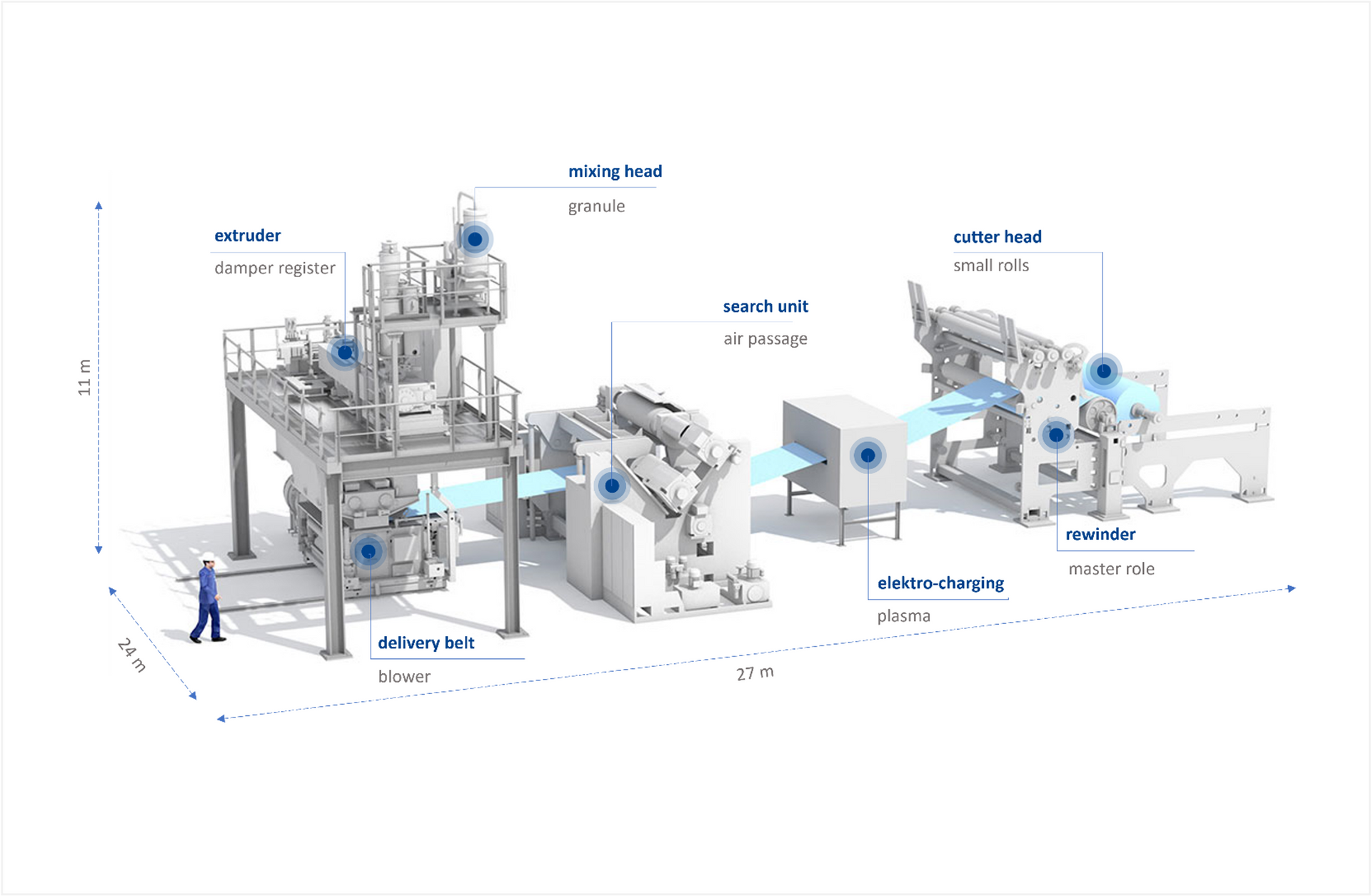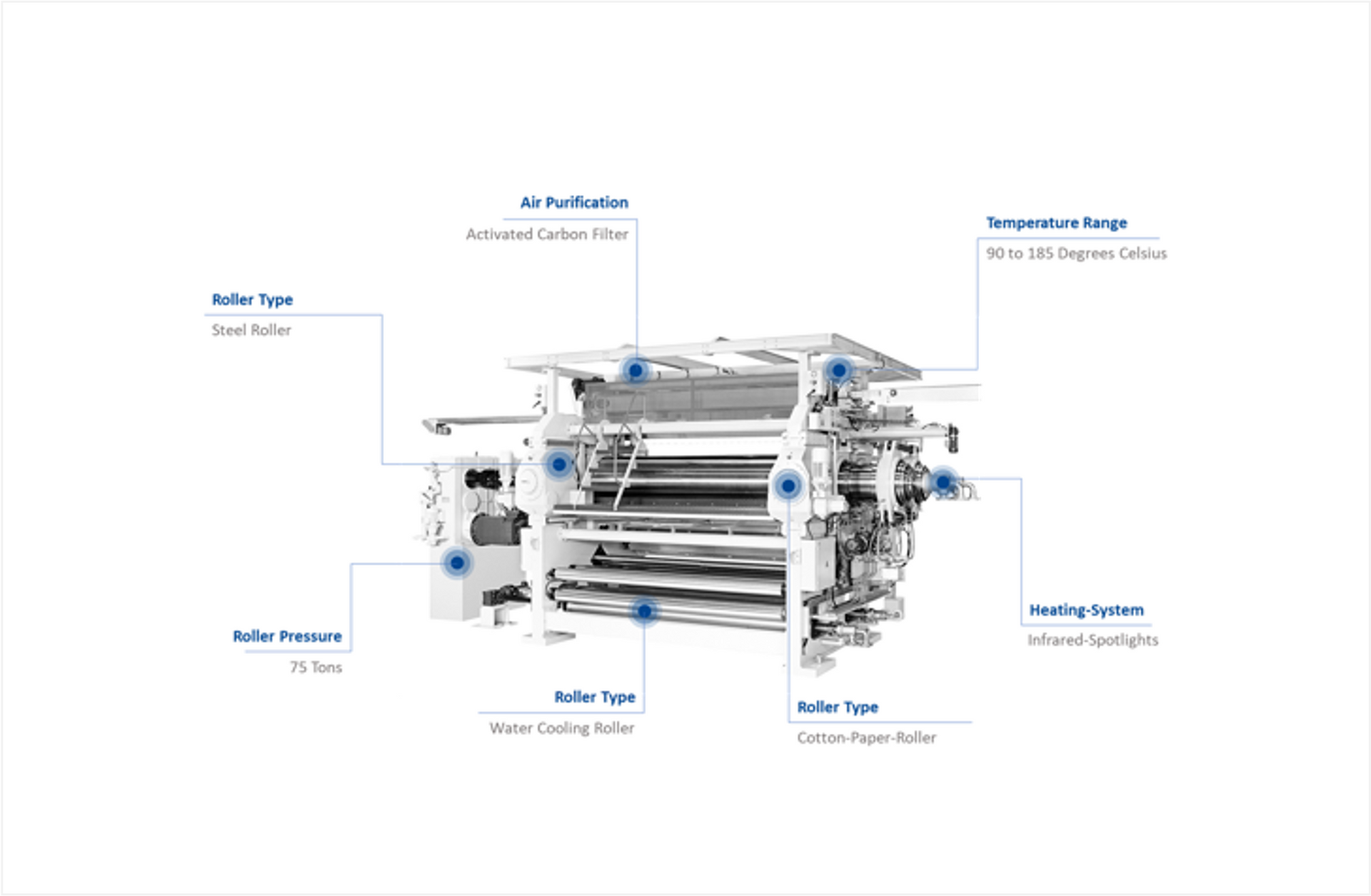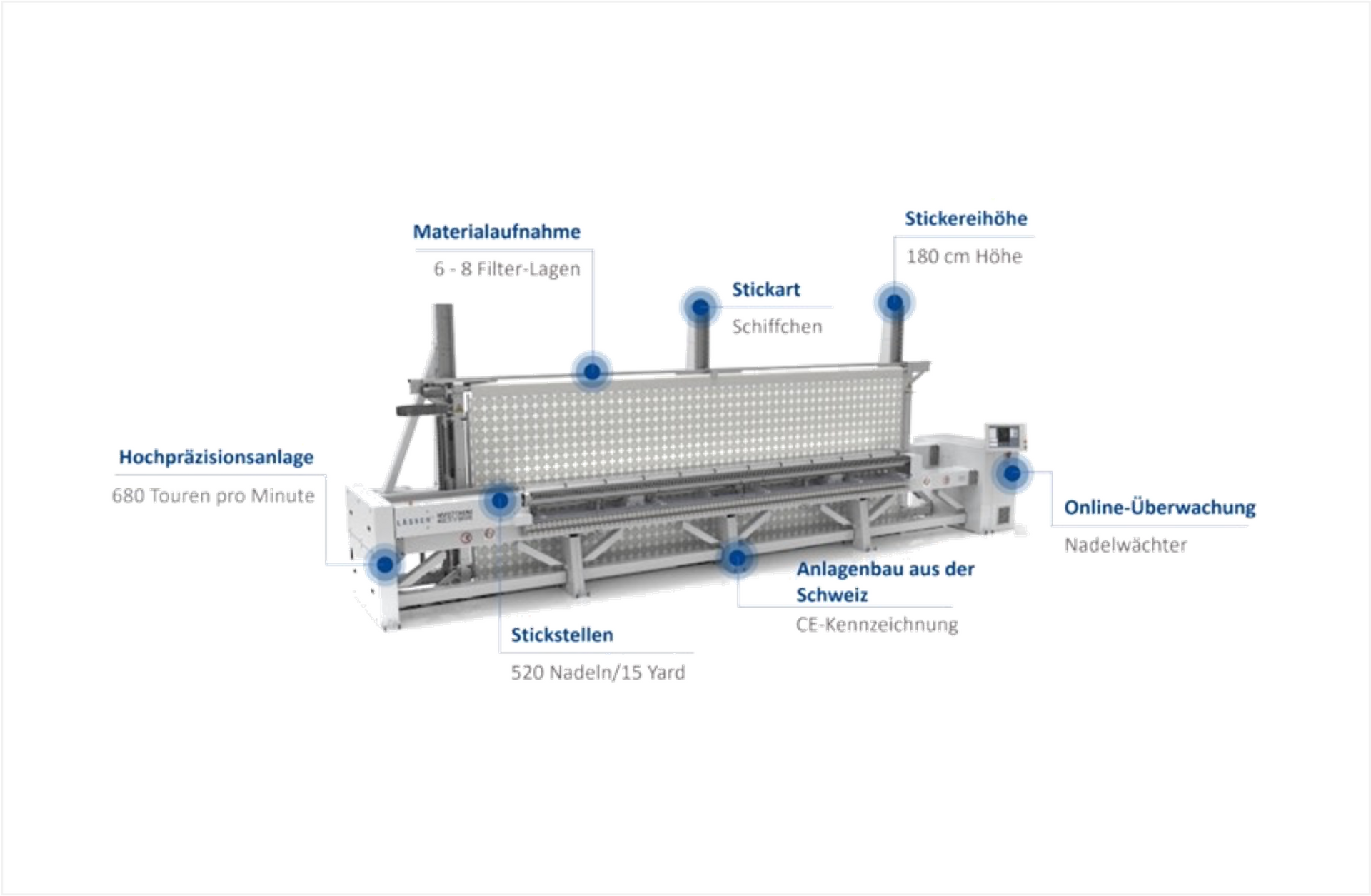PROJECT: C-HOOVER Direct air carbon capture (DACC) technologies
Urgent climate action can secure a liveable future for all
C(arbon) - Hoover Technology by Grabber Group
There is no single solution for addressing climate change, which is why we're exploring ways to deploy diverse technologies for the capture of
CO2.
Our Direct Air Capture technology has been designed to continuously capture CO2 from atmospheric air and deliver it as a gas - for safe and secure underground storage or use in the creation of low-carbon e-fuels.
The core of our DAC technology is a new CO2 super absorber filter material and process that our researchers have developed over the last 2 years.
What is direct air capture?
Direct Air Capture (DAC) is a technology that removes carbon dioxide (CO₂) from the atmosphere.
How it work? (State of Art)
Solid DAC technology (S-DAC) uses solid sorbent filters that bind with CO2. When thesefilters are full of air, the units that house the fans are closed and then heated. Once heated,the filters release the concentrated CO2 which can be captured for storage or use.
- Air is drawn in through a fan located inside the collector.
- Once sucked in, it passes through a filter located inside the collector which traps the carbon dioxide particle.
- When the filter is completely full of CO₂, the collector closes, and the temperature rises to about 100°C.
- This causes the filter to release the CO₂ so we can finally collect it.
Where do we have to go?
Innovations in CO2 use, including synthetic fuels, could reduce costs and create a market for DACs. However, the greatest potential lies in the further development of the filter-absorber material and the process technology.
What are the challenges?
Controllable, and potentially quick to implement, unlike natural means, Direct Air Capture (DAC) can supply carbon from the air. The process works in similar way to trees. Carbon dioxide is removed from the air via a capture medium (rather than leaves, a solid or liquid “sorbent” is exposed to the air) and once the medium is full, the CO2 is released from it usually via the application of heat. In doing so, a clean stream of concentrated atmospheric CO2 is created which can then be sequestered or used (or both).
There is an associated cost with the process; mainly the energy required for the heating of the sorbent. Its energy footprint makes it currently one of the most expensive way to remove CO2 from the air. However, the technology is nascent, and much as solar did, could benefit from technological breakthroughs and economics
What we do
We develop and deploy direct air capture machines and super-absorbent filter media that remove CO2 from the atmosphere.
How it work? (State of Art)
Using high-powered fans, air is drawn into a processing facility where the CO₂ is separated through a series of chemical reactions.
Then the CO₂ is either permanently stored in underground reservoirs through secure geologic sequestration, or is used to make new products such as building materials and low-carbon fuels.
- Air is drawn in through a fan located inside the collector.
- Once sucked in, it passes through a filter located inside the collector which traps the carbon dioxide particle.
- When the filter is completely full of CO₂, the collector closes, and the temperature rises to about 100°C.
- This causes the filter to release the CO₂ so we can finally collect it.
C(arbon) - Hoover Technology by Grabber Group
There is no single solution for addressing climate change, which is why we're exploring ways to deploy diverse technologies for the capture of
CO2.
Our Direct Air Capture technology has been designed to continuously capture CO2 from atmospheric air and deliver it as a gas - for safe and secure underground storage or use in the creation of low-carbon e-fuels.
The core of our DAC technology is a new CO2 super absorber filter material and process that our researchers have developed over the last 2 years.
What we do
We develop and deploy direct air capture machines and super-absorbent filter media that remove CO2 from the atmosphere.
Why is carbon removal important in the fight against global warming?
- INTERLAKEN, Switzerland, March 20, 2023 — According to the IPCC and Science Based Targets initiative, we must reduce our CO₂ emissions by at least 90% before 2050, but there will still be around 10% of unavoidable emissions remaining. Carbon removal is crucial to neutralize these emissions and keep global warming below 1.5°C
Intergovernmental Panel on Climate Change (IPCC)
There are multiple, feasible and effective options to reduce greenhouse gas emissions and adapt to human-caused climate change, and they are available now, said scientists in the latest Intergovernmental Panel on Climate Change (IPCC) report released today.
Why we need direct air capture?
With the scale of the climate challenge coming ever more starkly into focus, governments, investors, and companies are under increasing pressure to take rapid and decisive action. While reducing greenhouse gas (GHG) emissions is paramount, it is becoming clear that reductions alone are unlikely to be enough: it will also be necessary to remove GHGs from the atmosphere to limit the global temperature increase to 1.5C.
The UN Intergovernmental Panel on Climate Change (IPCC) said in its April 2022 report on mitigating climate change: “The deployment of carbon dioxide removals to counterbalance hard-to-abate residual emissions is unavoidable if net zero…emissions are to be achieved.
The benefits of direct air capture
Location-independent: CO₂ is in the air at the same concentration everywhere in the world. This means that DAC plants can be located anywhere as they do not need to be attached to an emissions source.
More
benefits of direct air capture: (State of Art)
Highly scalable and measurable:
The plants are based on a modular technology design, making them highly scalable.
Efficient land usage:
The carbon capture plants require less land than other techniques. E.g., on a land area of 0.4 acres, a DAC plant can remove 4,000 tons of CO₂ from the air every year, which is almost 1,000 times more effective than trees.
One of a modular CO₂ collector containers has a nominal capacity of 500 tons per year. You’d need about 20,000 trees to match this amount.
How Technologically Ready is Direct Air Capture for Widespread Use?
DAC is currently categorized as “technology readiness level” 6 (on a scale of 1 to 9), meaning it’s still in the large-scale and prototype phase, not yet ready for full commercial deployment. But this also means there’s ample opportunity to improve performance and reduce costs through learning from early iterations of the technology.
World Resources Institute
How Much Does Direct Air Capture Cost?
- Despite the benefits and flexibility, direct air capture is more costly per tonne ofCO2 removed compared to many mitigation approaches and natural climate solutions as it is energy intensive to separate carbon dioxide from ambient air.
- The range of costs for DAC vary between $350 and $600 today depending on the technology choice, low-carbon energy source, and the scale of their deployment; for comparison, most reforestation costs less than $50/tonne..
- A reason for high costs today is there are relatively few DAC companies and projects — developing more projects will provide learning that could reduce costs.
Why do we need direct air capture?
The latest IPCC (International Panel on Climate Change) report clearly states that urgent climate action is needed to halve emissions by 2030.
To do so, we must both drastically reduce emissions and remove legacy CO₂ emissions from the air.
Direct air capture and storage, or DAC+S, represents a permanent carbon removal solution.









